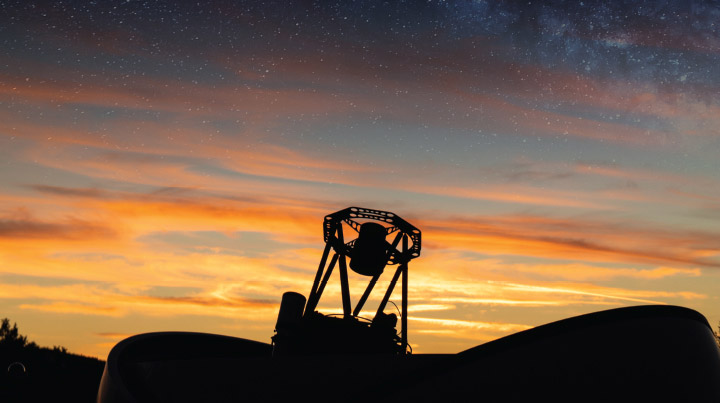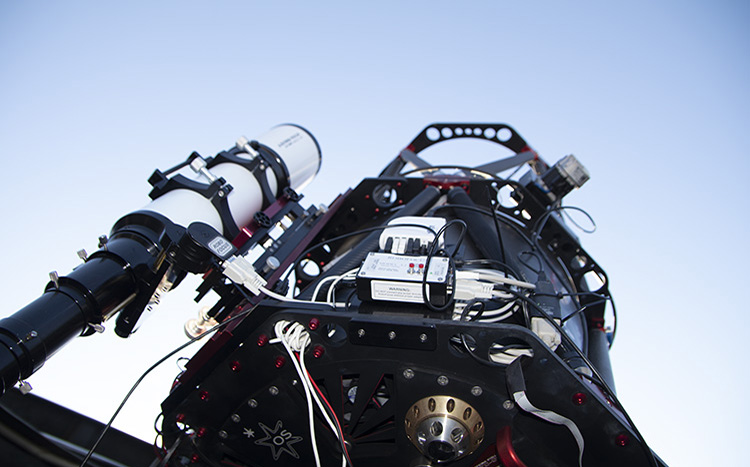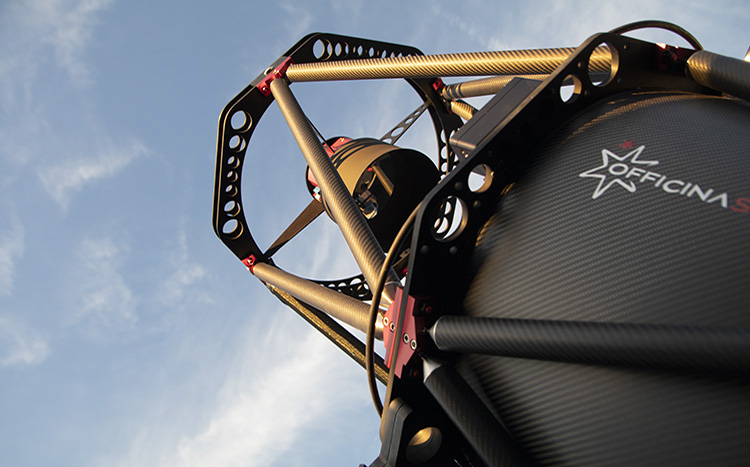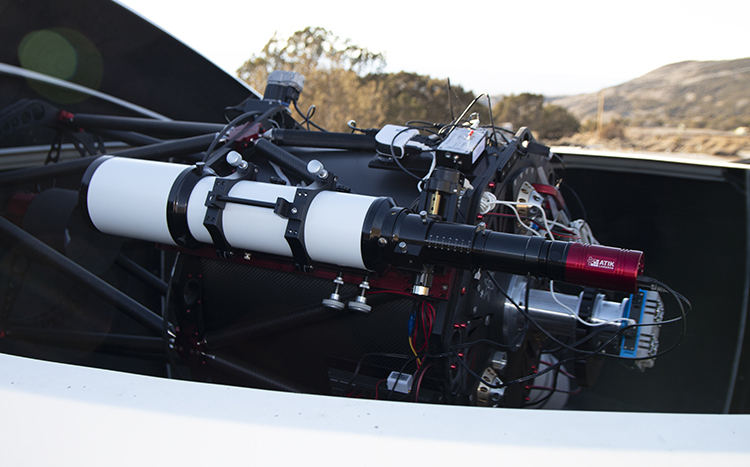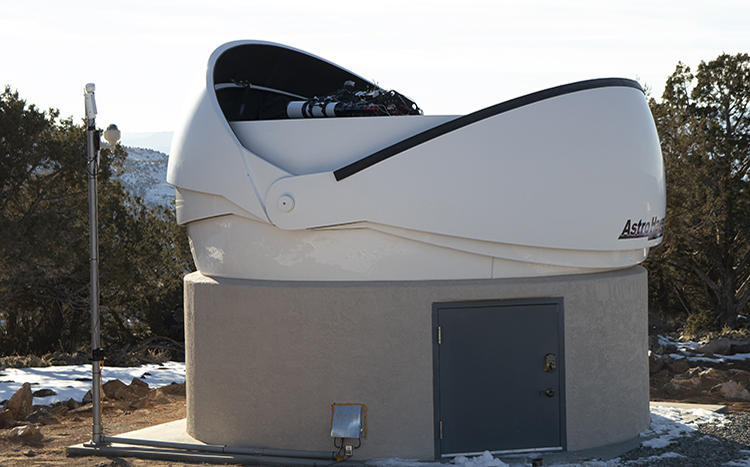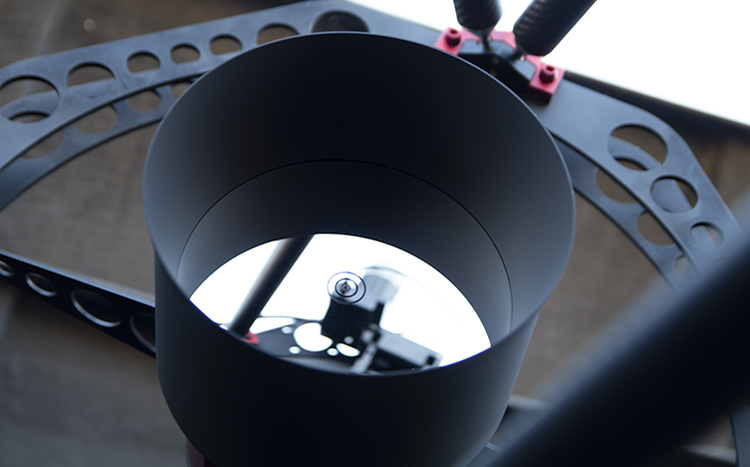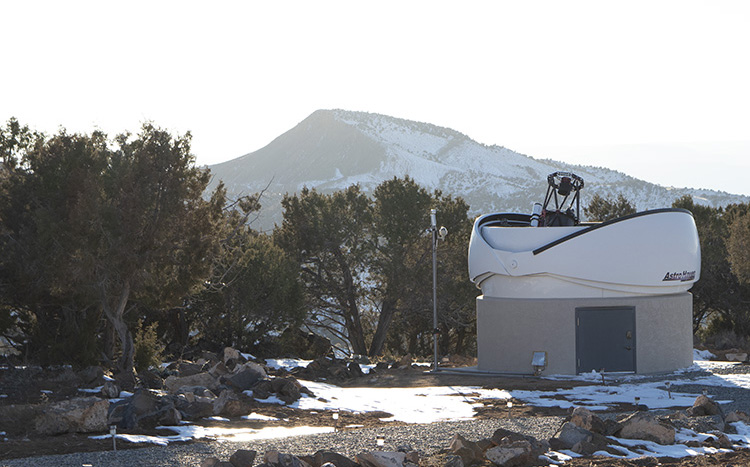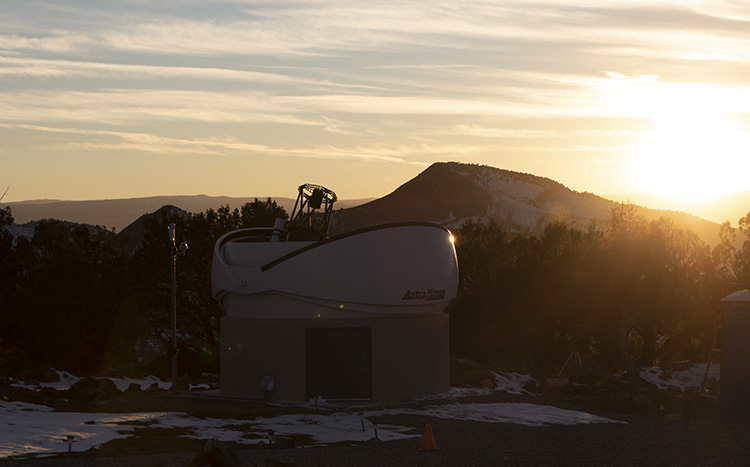Partnership with the U.S. Air Force Academy brings new astronomy research and educational opportunities to the Grand Valley
A hilltop in Whitewater, about 30 miles from Grand Junction, is now home to a world-class observatory with a research-grade telescope that is capable of working with other telescopes from around the world. These telescopes work in conjunction to provide continuous observations of objects in space.
The Grand Mesa Observatory is one of four Colorado locations, one near each corner of the state, chosen by the United States Air Force Academy to be part of its Falcon Telescope Network. The project includes 12 research-grade telescopes at strategic locations around the world, including Australia and Chile, that gather data about objects in the stratosphere and far beyond our planet.
As a part of this project, the Air Force supplies a telescope to a partnering institution if the institution provides the building and infrastructure.
The halfmeter-size telescopes are best suited for observing satellites — from lower-orbiting satellites like the International Space Station to deep-space satellites such as the one used by Sirius XM Radio.
The ability to study a satellite simultaneously from more than one location greatly enhances the amount of information that can be obtained, explained U.S. Air Force Academy Physics Professor Francis Chun, PhD, who is also the head of the Falcon Telescope Network.
“If you look at a man-made satellite from one location, you’ll gain a certain amount of data based on the optical signature of the satellite. That will tell you something. But if you can look at that same object simultaneously from a second telescope at a different geographical location, you can learn much more about the characteristics and features of the satellite.”
The telescopes are also perfect for studying planets orbiting other stars in the galaxy and for observational measurements on binary and variable star systems and supernovas, Chun said.
CMU Associate Professor of Physics Jared Workman, PhD, said access to the telescope will greatly enhance and alter the way he teaches astronomy at the university.
“I’m a theorist by training, meaning I essentially do analysis with pencil and paper. I’m not an observational astronomer,” he said. “So, from my perspective, this opens up a lot of opportunities to actually make the connection for my students between objects and how we study them…until now, students had no way of knowing how we get the data, but this allows me to bring a little bit of that science into the classroom.”
CMU students, and astronomers around the world, will be able to view the data from a computer screen (in-person access at the satellite location isn’t allowed). And students at all levels of education, from kindergarten on up, will be able to utilize the network as a learning tool.
“Our primary motivation for creating this network, beyond Air Force Academy use, is STEM (science, technology, engineering and mathematics) outreach,” Chun said. “We’ve created a program we call First STEM Light in which we ask K-12 students around the world to propose objects to be studied. We’ll collect data, then send it to the students and their teachers. It’s really an amazing thing for them to view.”
Workman sees the partnership with the Falcon Telescope Network as a valuable asset to attract talented high school STEM students to CMU, and to entice underclassmen to consider science as a field of study during their time at the university.
Afterall, CMU is now part of a global space community.
